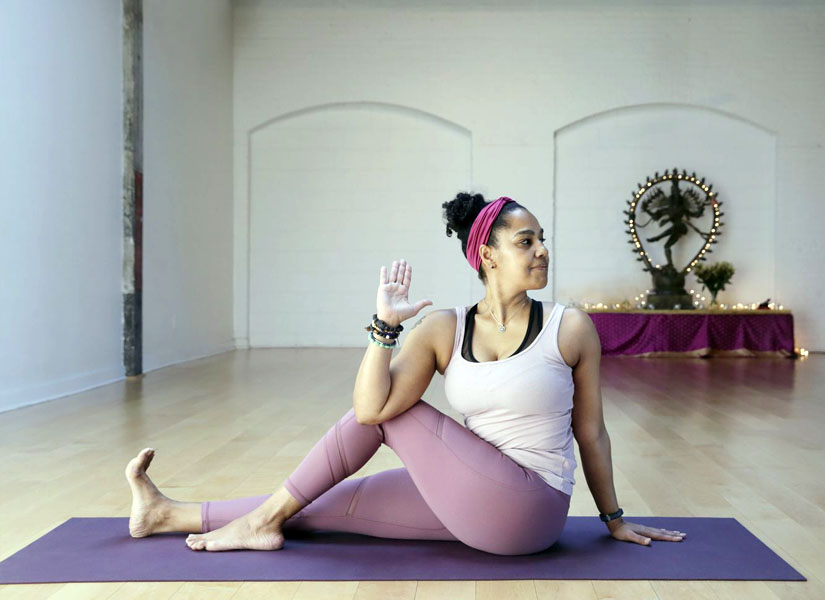Yoga Therapy
Yoga therapy is a type of therapy that uses yoga postures, breathing exercises, meditation, and guided imagery to improve mental and physical health. The holistic focus of yoga therapy encourages the integration of mind, body, and spirit. Modern yoga therapy covers a broad range of therapeutic modalities, incorporating elements from both physical therapy and psychotherapy.
Yoga therapy is a growing field and scientific evidence has begun to emphasize its efficacy. It is used to treat existing mental and physical health issues, but can also be used as a self-care strategy for prevention and maintenance.
Yoga therapy is well established as a treatment for depression and anxiety. A meta-analysis cited in the Primary Care Companion for CNS Disorders found that yoga therapy also shows promise for the treatment of posttraumatic stress (PTSD) and schizophrenia. Additionally, yoga therapists have begun to develop treatment modalities to suit children with autism. The book Yoga Therapy for Children with Autism and Special Needs, written in 2013 by yoga teacher Louise Goldberg, is already considered a critical text for novice and experienced yoga therapists alike.
Because of its concentration on mind and body integration, yoga therapy is also used to address many physical health issues. It has been effectively used to treat back pain, heart conditions, asthma, chronic fatigue, hypertension, multiple sclerosis, and side effects of chemotherapy.
Benefits Of Yoga Therapy
- Stress relief
- Mental clarity
- Stronger muscles
- Reducing pain and pressure.
- Reducing
- Increasing balance.
- Helping you sleep
- Aligning your body for best function
What Yoga Therapy Can Help With
Yoga takes training and practice. Your first session will be very different from your 10th session. When you start yoga therapy, your yoga therapist will determine what exercises are right for you to start your practice safely. As you get more experience doing yoga, it’ll feel easier. You can slowly increase the difficulty of your movements under your therapist’s supervision. If a movement or stretch isn’t comfortable or causes pain, stop and ask for assistance. Your therapist can help you modify the movement or offer another that uses the same muscles but in a different form.
PRACTICE AND BENEFITS OF YOGA THERAPY
Yoga therapy is practiced in a wide range of formats. Physical therapists, for example, often implement yoga techniques in their delivery of massage and other treatments. Yoga therapy practice can resemble physical therapy, rehabilitative therapy, and/or psychotherapy. Unlike a standard yoga class, yoga therapy sessions are typically conducted in one-on-one or small group settings. Yoga therapy can be provided as an adjunct therapy to complement other forms of treatment, or it can be used to directly treat a specific issue. Yoga techniques range from simple to advanced, and can be enjoyed by people of all ages.
Potential benefits from yoga therapy include stress reduction, psychological well-being, improved diet, and efficient functioning of bodily systems. A 2011 qualitative study from Inkanyiso: Journal of Humanities and Social Sciences examined the effects of yoga therapy on anxiety. The findings not only indicated that yoga therapy effectively reduced subjects' anxiety, but improvement across several dimensions of physical and mental health including physicality, relaxation, and mindfulness.











